Otogi Zoshi: Vol. 6 Full Circle (US)
Introduction
What would make you double dip? Better picture, multi-channel sound, extra features, a cute little teddy bear with each purchase? How about Manga Entertainment's year of hell? As so often appears to happen with Manga, they changed hands over the winter of 2006, and come 2007 the new owners decided to economise on all the anime releases in the UK. It was a nightmare, and if you look at any of my anime reviews of the period, you'll see just how much of a nightmare it was. Extra features went bye-bye on all but the most lucrative of releases, and every show released for the first 8 months of the year went dubtitled. It saves on the BBFC fees to only rate one language for a release, and a cheap cheat is to apply the subtitles transcribed from the English track to the foreign language track. Of course accuracy of translation falls by the wayside when this happens, especially for dubs that are made a little more flowery for the local audience (Tokko is a case in point).
However, the series that suffered the most were the ones that were being released over the changeover. Otogi Zoshi's first three volumes followed the US release with properly subtitled episodes, and a bucket-load of extra features, although Manga pushed their capacity by putting two discs worth of material on single discs for the first two releases, before finally releasing a two disc set for volume 3. But come volume 4, and the subtitles were dropped when they were needed the most, as the modern era resulted in a lot of on-screen text that needed translating, and the extra features never got further than the BBFC. They didn't even bother submitting them for the final two volumes, and the lack of consistency and sudden lackadaisical attitude to what had been a prize series in their catalogue stuck in my craw and festered. What a difference a little importing makes. I've now got my hands on the US releases from Media Blasters, and seeing what UK customers missed out on is even more galling. I knew Manga had made a mess of the release, but I never knew how much of a mess. The release format is a little different, with an episode distribution of 5,4,4 on the US volumes, as opposed to 4,4,5 on the UK discs, and these reviews will have a decent amount of cut and paste. But the extras are all brand new.
Otogi Zoshi is a 26 episode series that has an interesting premise. It's a story told over a thousand years with the first half set during the Heian period of Japanese history, while these final thirteen episodes are set in the modern day. Coming from the powerhouse behind Ghost In The Shell Stand Alone Complex that is Studio I.G., this is a tantalising title. With the Heian arc concluded, we shift to modern day Tokyo, where all the main characters have been reincarnated. For the last year since the disappearance of her brother Raiko, Hikaru has been struggling to come to terms with his loss, and to make ends meet has opened her house to lodgers. Among her tenants are photojournalist Tsuna, fortune-teller Urabe, and playboy Sadamitsu, who lives with his adopted son Kintaro. Tokyo is being beset with strange supernatural occurrences, and they all seem to revolve around Hikaru, her missing brother and a strange figure in a dark coat who seems to know her. The final volume rounds things off with 4 episodes.
23. Marunouchi
Hikaru's friends aren't about to let her run off on her own, and when Tsuna and Urabe figure out what's going on, together with Sadamitsu and Kintaro they head to the final gate to the city, Tokyo Station. They find Hikaru there searching for Mansairaku. The nexus to the distortion is located somewhere in the station, and they have until sunset to find it.
24. Manseibashi
The distortion may have been handled, but the problem just gets worse. Time has frozen, as Tokyo seems poised for destruction. Mansairaku tells Hikaru that the only way to repair the damage, and rescue her brother is to go back to where the fracture originally occurred, atop the Rashomon during the Heian era. But given what Hikaru has learned of Mansairaku, can she trust him?
25. Kimon TV Special: First half of Tokubeshi Hen
One year previously, Urabe was a down on her luck fortune-teller, looking for a new place to live. Mysterious occurrences in a hospital lead her into a chilling adventure, where the only ally she has is a strange cat.
26. Minato TV Special: Second half of Tokubeshi Hen
Mansairaku contemplates eternity as he wanders the city, and gets reflective about his life, the cities, and their inhabitants that he has sworn to protect. He encounters an old man in the park who is strangely familiar, and appears to recognise him. His insights into the nature of time provoke thought, but more curious is the riddle of who the old man actually is.
Picture
Otogi Zoshi is presented in a 4:3 aspect ratio and while compression artefacts are scarce, the transfer is clear, sharp and colourful. There is still moiré and shimmer over fine detail though. The animation, as you would expect from Production I.G is something quite special. For the modern era, all the characters have had a makeover, Hikaru has short hair and given the heat wave, has a preference for suitably brief clothing, Tsuna settles for jeans and a T-Shirt, while Sadamitsu looks like a pimp. There is once again a degree of stylisation, posterized photographs represent real life locations, but there is a greater degree of familiarity with the modern character and world designs. The animation seems to have gained a degree of fluidity over the Heian arc as well.
Again with the NTSC transfer played back on European systems, you may notice a slight flicker in the image, and a lower resolution, but that's offset by the lack of NTSC-PAL ghosting and a greater clarity and sharpness.
Sound
You can choose between DD 2.0 and DD 5.1 soundtracks in both English and Japanese. I chose the Japanese 5.1 track and it's a good expressive surround track. The English track is just as good, and as usual with recent anime releases, the dub is professional and easy to listen to. It's all change for the themes, and the new opening is a catchy little tune that has the characters singing along to it in the opening sequence. The end theme of episode 13 now ends all the episodes. The incidental music has also changed from traditional to contemporary, although it still suits the story well. But here's what is so attractive about this disc. This release is fully subtitled with proper translated subtitles for the dialogue and captions for the onscreen text. There is also a separate signs only track for the onscreen captions if you are watching the English dub. And it makes all the difference.
Extras
All the extras are on disc 2
You'll find the ubiquitous trailers for other Media Blasters anime releases through Anime Works, Fight Iczer 1, Sukisho!, Genshiken, Midori Days, and Giant Robo.
There are 22 minutes of Tokyo TV Cast Interviews. In it Fumie Mizusawa (Hikaru), Kenta Miyako (Tsuna), Oki Sugiyama (Sadamitsu), Kumi Sakana (Urabe), Wasabi Mizuta (Kintaro), and Shinichiro Miki (Mansairaku), all talk about their characters, the show, and their experiences working on it.
The final Group Discussion 8 sees the return of Michiko Yamakawa of Production IG, interviewing director Mizuho Nishikubo, sound director Kazuhiro Wakabayashi, and chief writer Yoshiki Sakurai. This lasts 23 minutes, and the group discuss their favourite episodes, and offer more on the ADR process, as well as on refining the script.
The final Tokyo University Tokyo Lecture is here as well, with Hiroyuki Suzuki talking about Tokyo Station, superstition in architecture as it developed from an affinity to nature, and he compares Tokyo to Kyoto, and how that related to the two arcs of the story. This final featurette lasts 16 minutes.
Conclusion
Otogi Zoshi isn't the most accessible or flashy of anime. The story is a simple and straightforward one, and the pace of the show is often dictated by the prettiness of the animation instead of the dictates of the plot. To overcome this, the characters are well written and rounded, and the idea of splitting the story across two eras is a strong attractant. It's fair to say that Otogi Zoshi is an acquired taste, and one that I am glad to have picked up. If you invest in the show, and allow yourself to fall for its rather unique charms, then there is much to gain from it. And in the end, if I'm motivated enough to import the final volumes from the US, despite already having the Manga discs, then there certainly is something to this show.
This final volume offers a somewhat conflicted experience though, which does little for it, and even less than the Manga release. Strike one against the show is that it ends early. Unlike the UK disc that had three episodes of five devoted to rounding off the story, the US release has even less, with half the disc given over to bonus episodes. It also ends in a very familiar way to those who have experienced more than a few hours of Star Trek. I noted earlier on that this second half of the series is much more episodic compared to the long arc of the first thirteen episodes. But in the final three-episode arc of the series that started in the previous volume, it becomes apparent that the adventures that Hikaru and her friends get into are a mirror of that Heian arc. Where initially it was the quest for the Magatama beads, now we see that the supernatural disturbances in Tokyo reflect what had happened earlier. It's a neat tie to the first half that works very well. But the fact is that there aren't any major twists to the story, and it boils down to Hikaru learning what she has to do, then going out and doing it. The only question is whether she should trust Mansairaku or not.
It wouldn't have been so bad if the show had ended there, with an emotional climax worthy of the build up of the first 23 episodes. It's just that the two bonus episodes, almost tagged on as an afterthought, prove to be very anticlimactic, and succeed in diluting the energy of the conclusion. They would have been better placed in the middle of the run, or presented on this disc as bonus features, rather than tagged on to the end of the main run of episodes. The first is a straightforward ghost story that shows how Urabe met the other friends. She has to investigate the mysterious happenings in a hospital, and on the way befriends a stray cat. The second episode takes us into philosophical territory, as Mansairaku examines his life and the part he has to play in protecting the city. We approach Ghost in the Shell levels of dialogue here, with discussions of time and space, existence and destiny. Neither episode stands well in the main run, and all they offer are some added insights into two of the characters. Placing the episodes after the climax of the series does tend to end things on a rather introspective note, and it's better to watch them prior to the end of the story.
Otogi Zoshi ends well, and then over eggs the pudding with a couple of thin bonus episodes. The story is hardly convoluted, indeed it ends in as simple a way as you can expect. But where the show succeeds is two fold. The look is astounding, great animation, atmospheric world design, and a singular character design ethic that makes this show stand out above the crowd. It is a joy to behold. The second thing is the depth of characterisation. These are all characters that grow and develop over the run time, and they are easy to empathise with. I stuck with Otogi Zoshi because I wanted to know what would happen to them, more so than I was dispirited by the lack of humour and occasionally glacial pace. Otogi Zoshi isn't for all tastes, but if you are looking for something unique in style, that offers something different from run of the mill characters and stories, it's well worth looking at.
This US release is definitely the way to go, especially for the second half of the series. With the Region 1 discs, you get the extra features that Manga left out, as well as the translated subtitles. You also get signs that translate the on screen text, something that is essential in episode 23, an episode that I felt was hamstrung on the Manga disc. And now, Media Blasters have made it an even more tempting purchase by announcing the half season sets, collecting all the discs into cheap boxsets. You can get the whole Tokyo Arc for the price of one of the individual volume releases, and if region consistency matters, you can have the Heian arc for the same price.
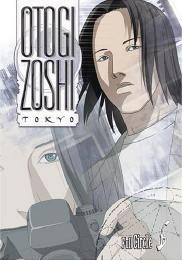
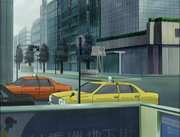
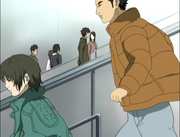
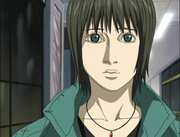

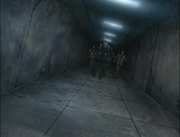
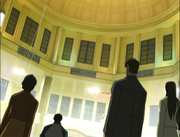

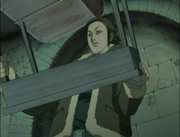
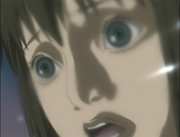
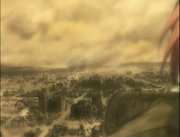
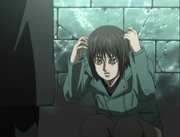
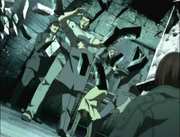
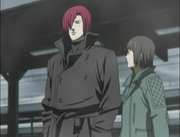
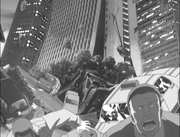
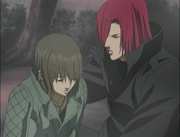
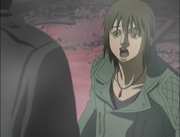
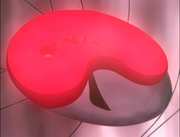
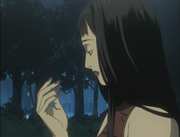
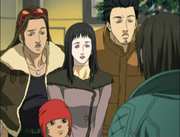
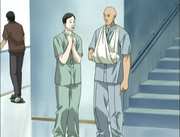

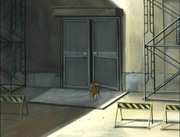
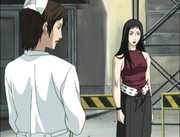
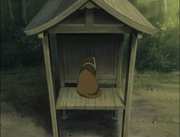
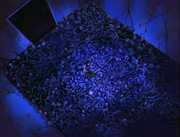
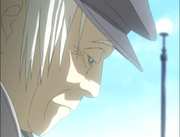
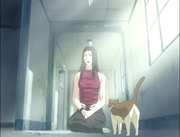
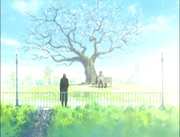
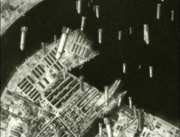
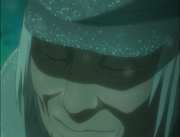


































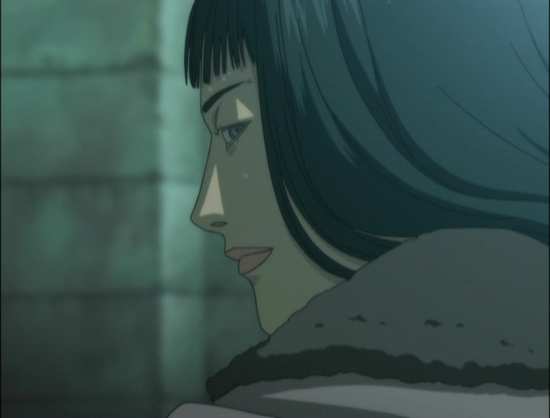









Your Opinions and Comments
Be the first to post a comment!